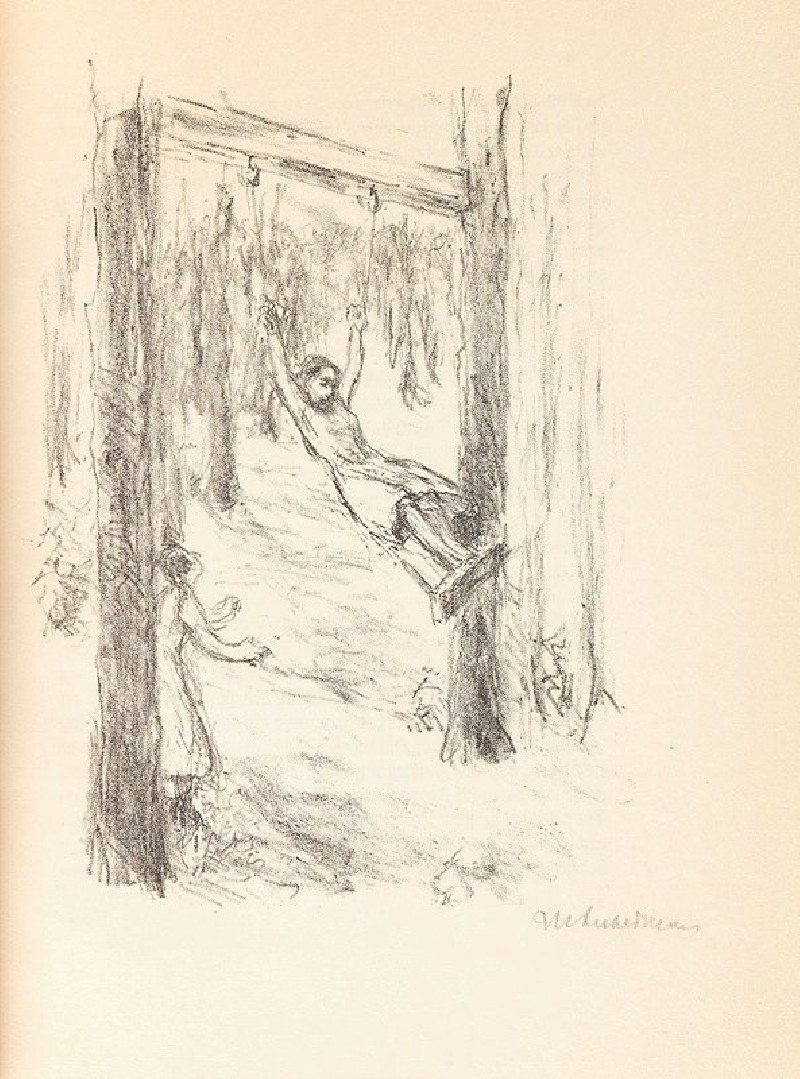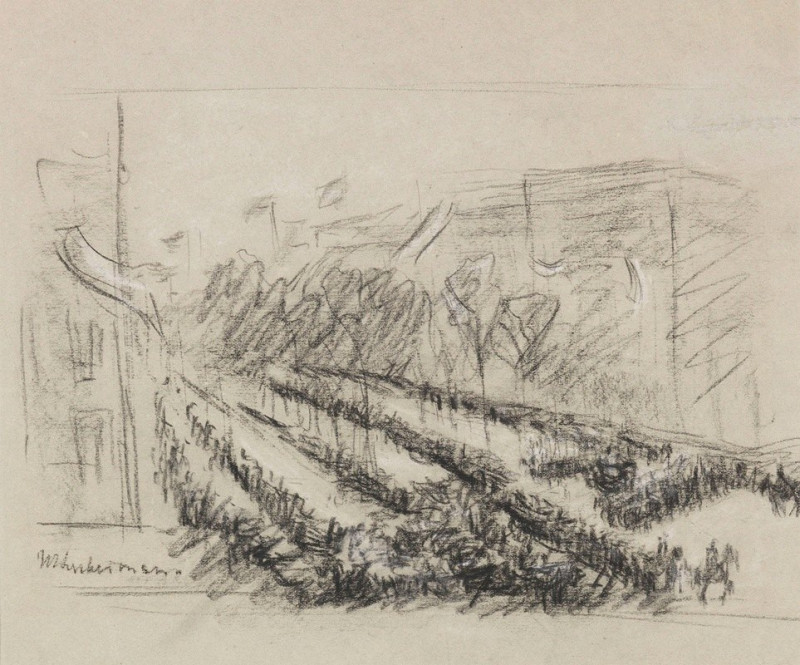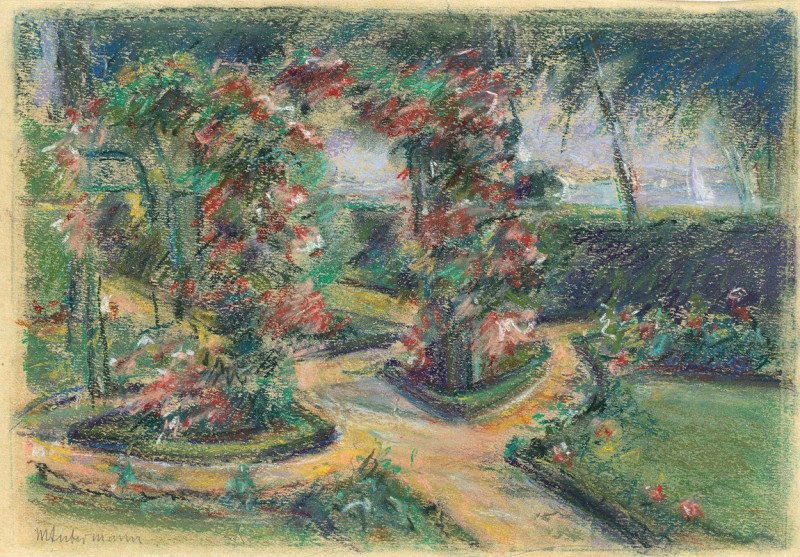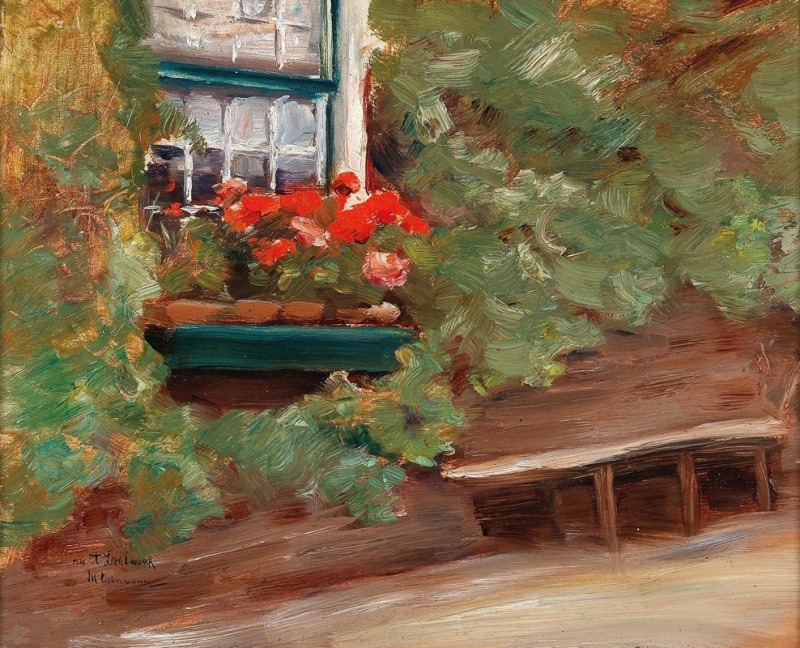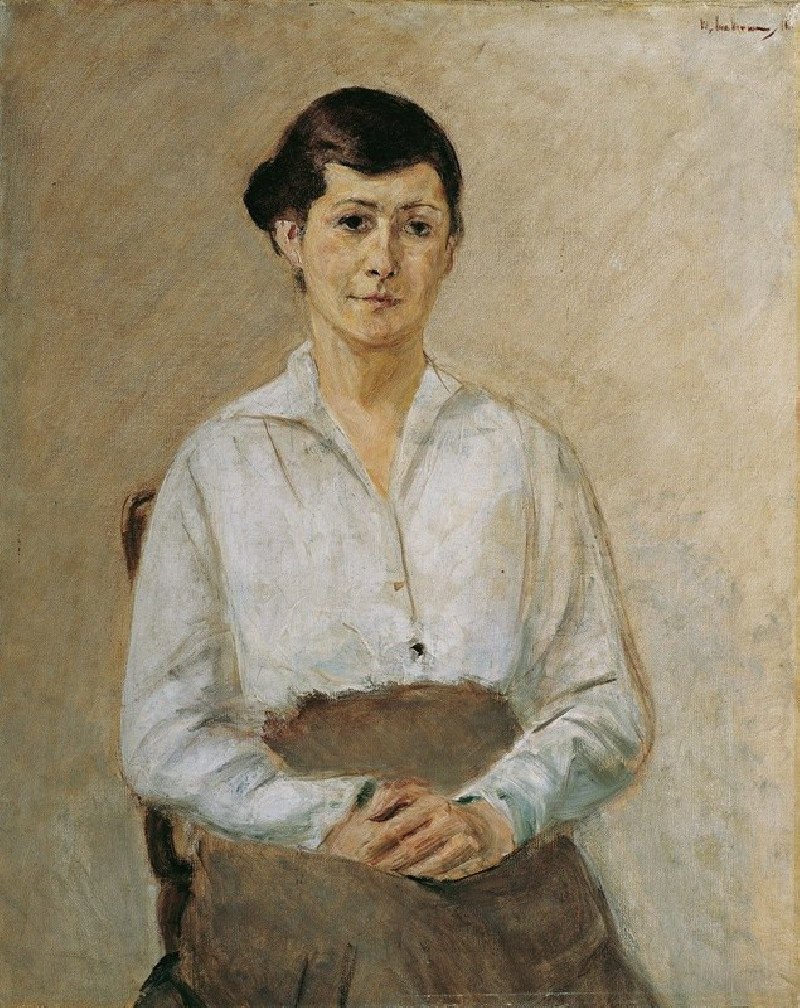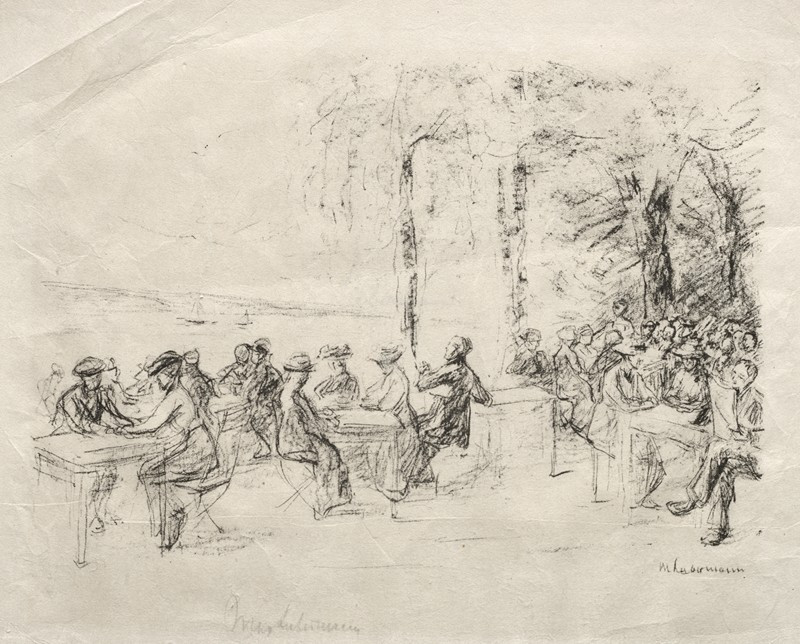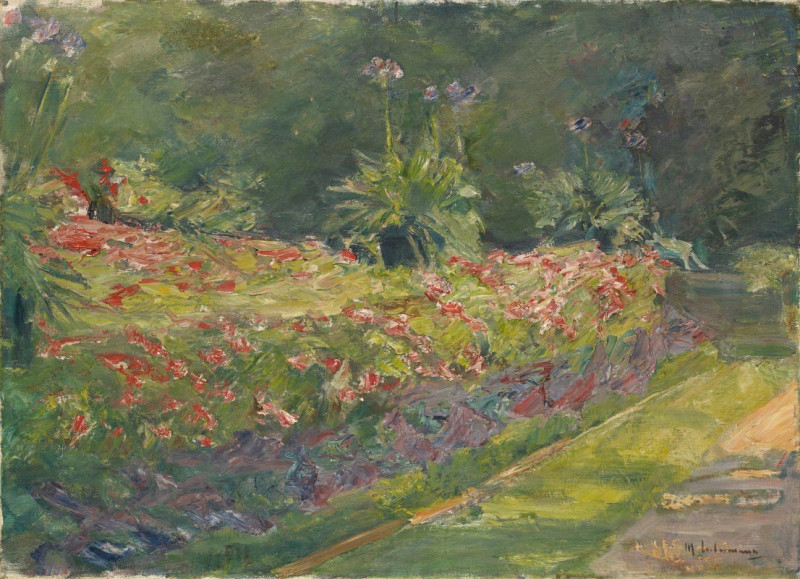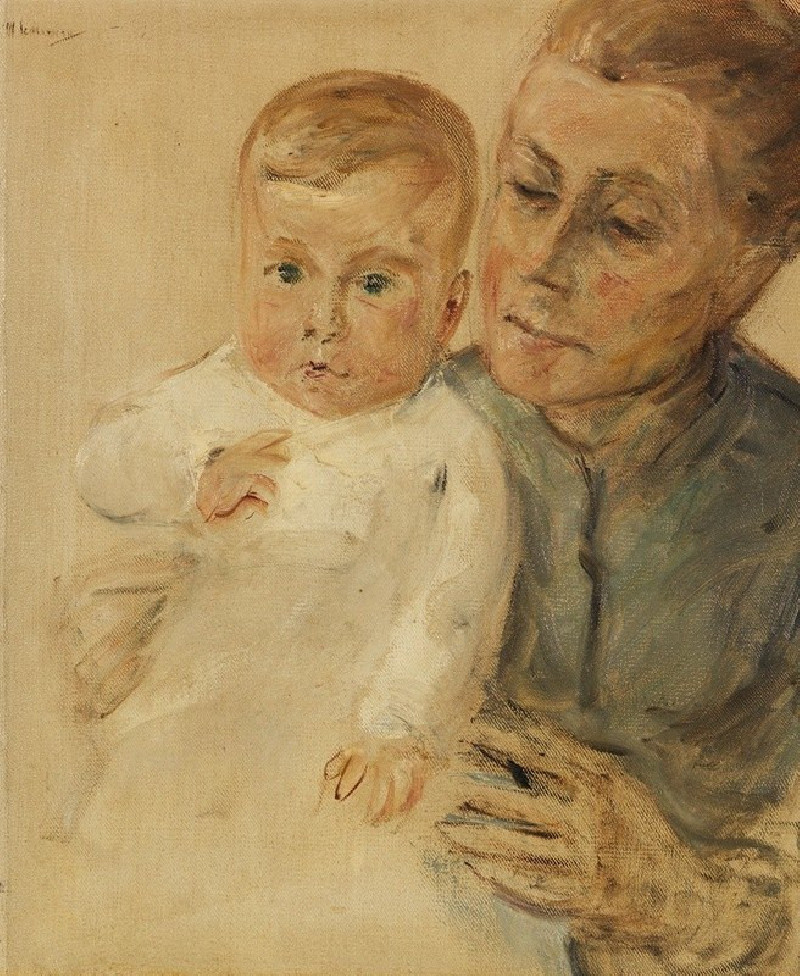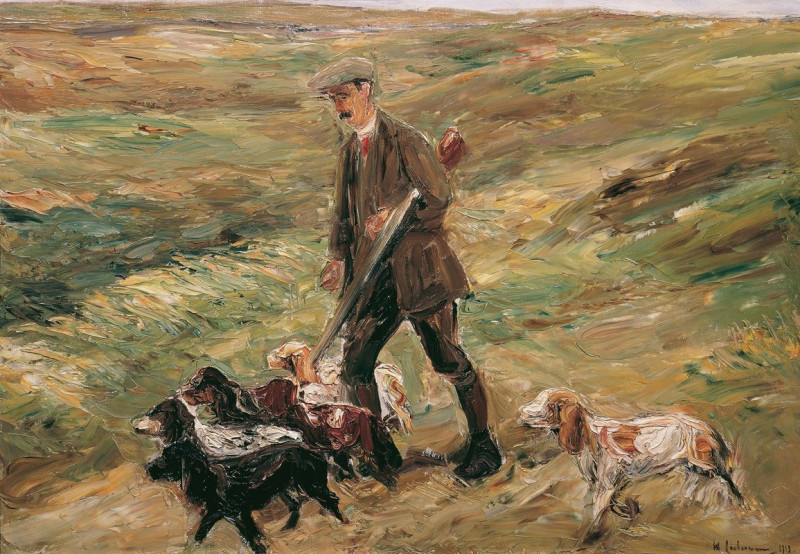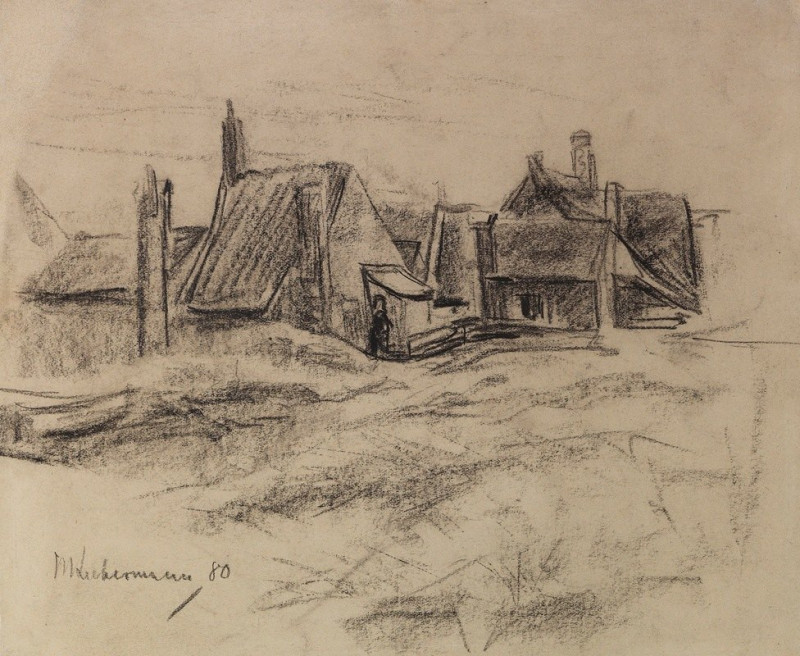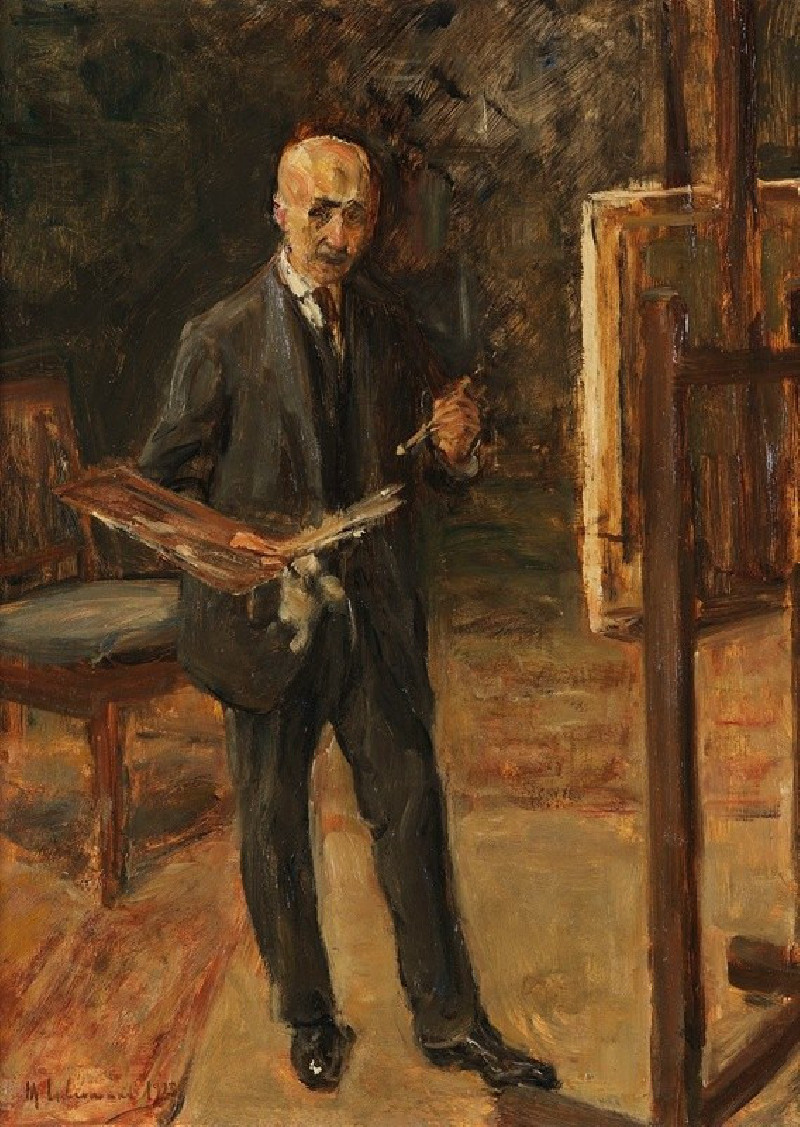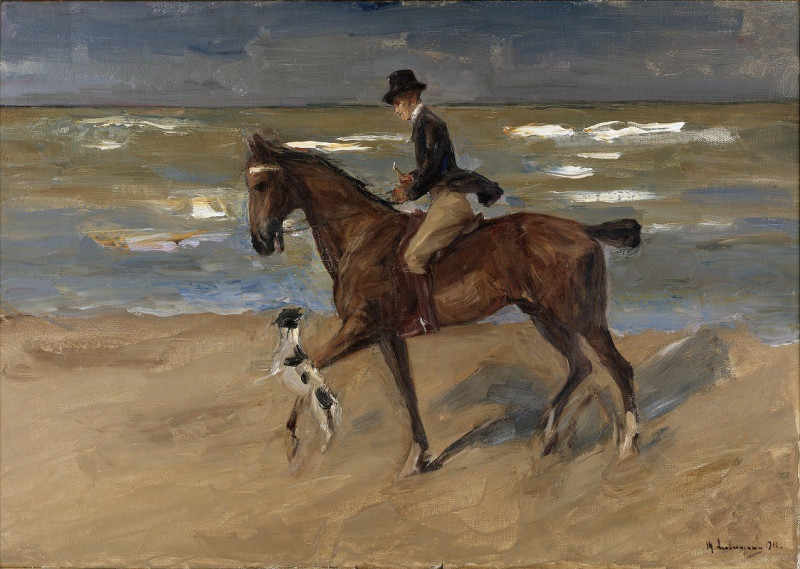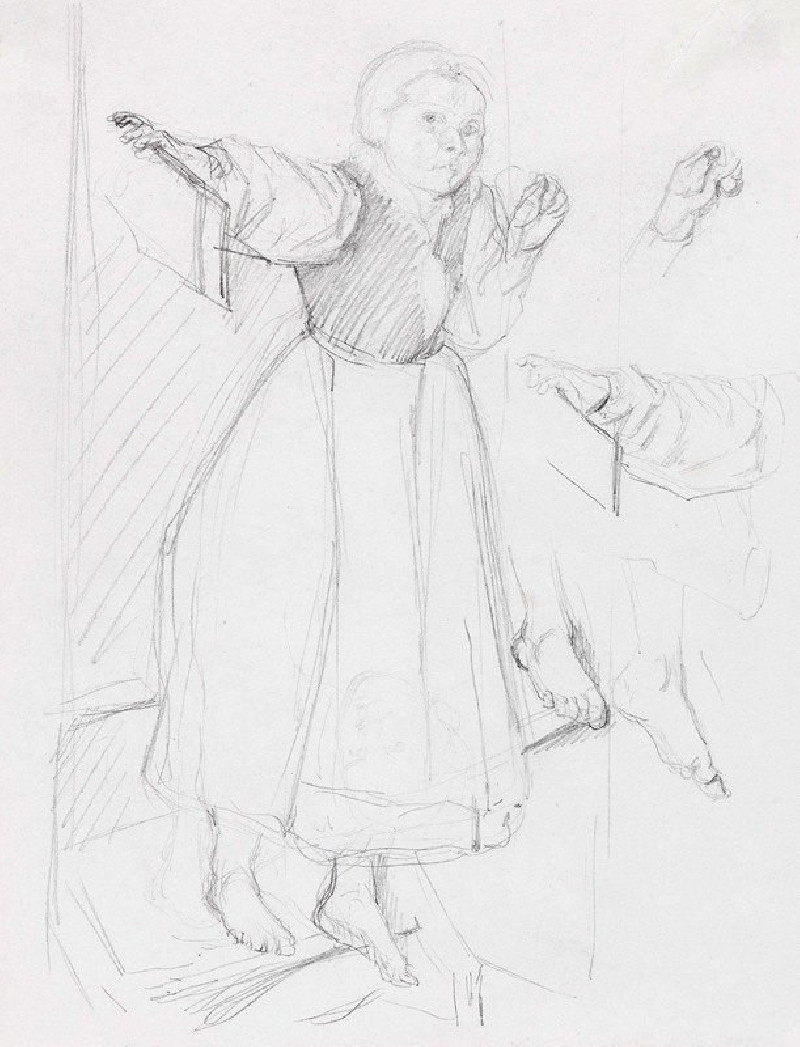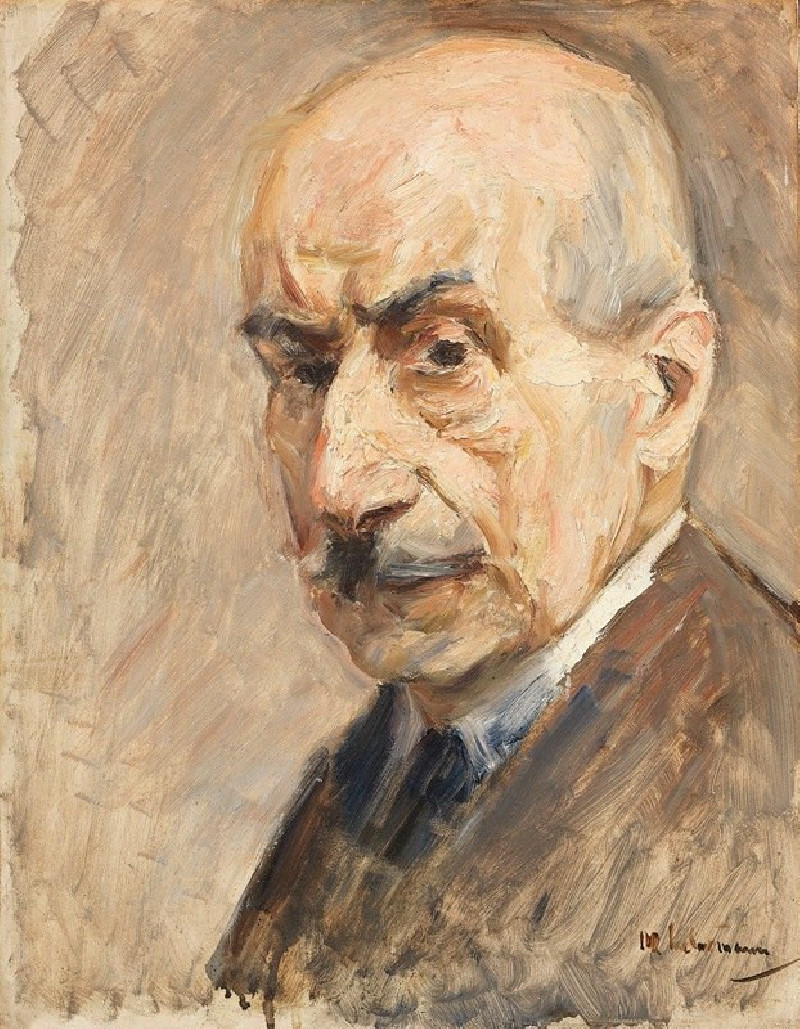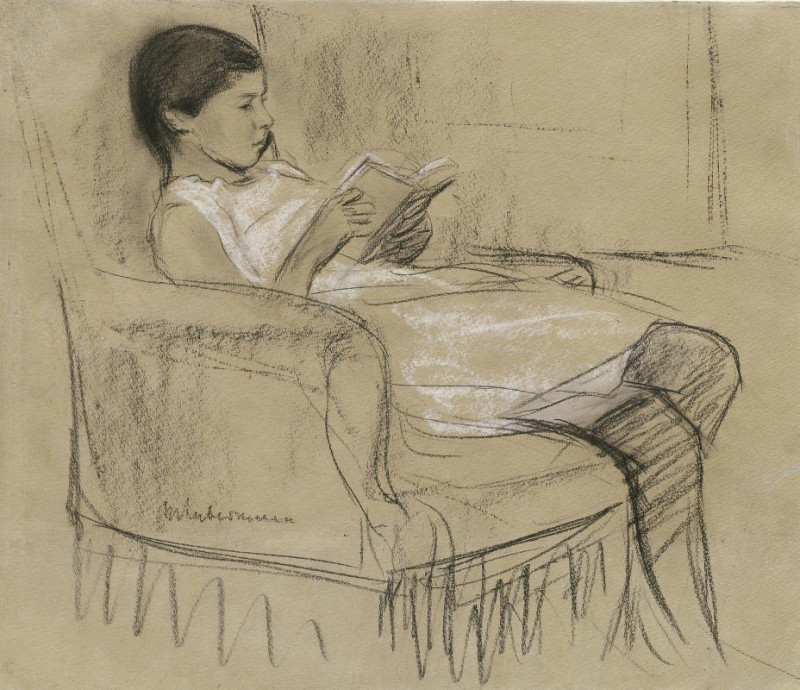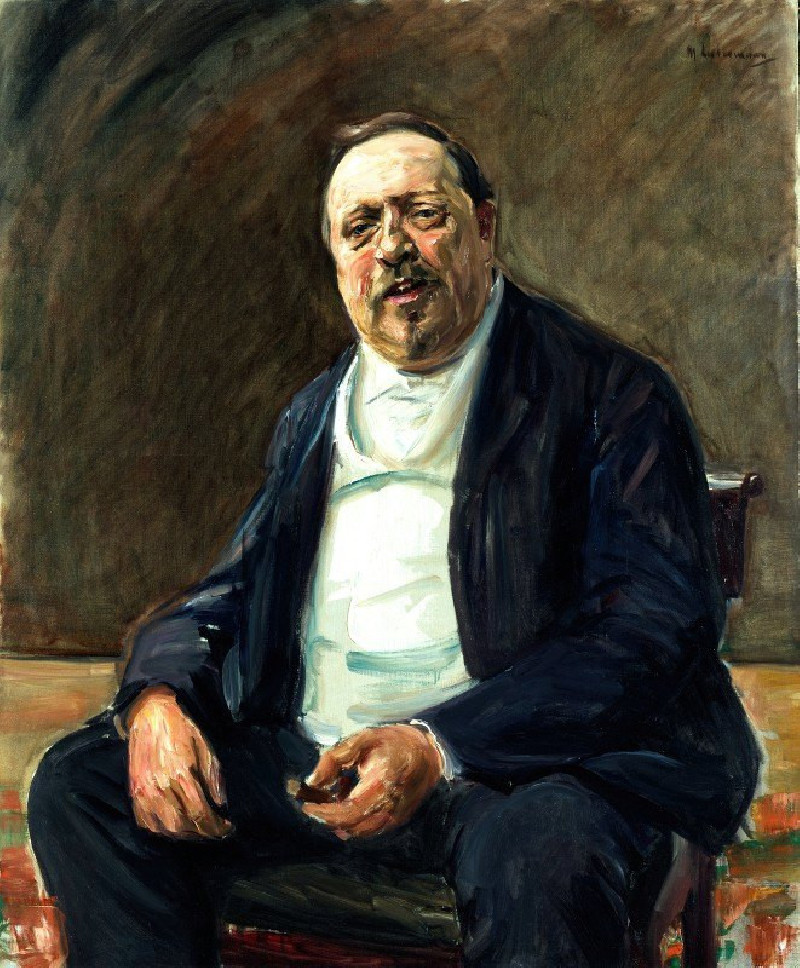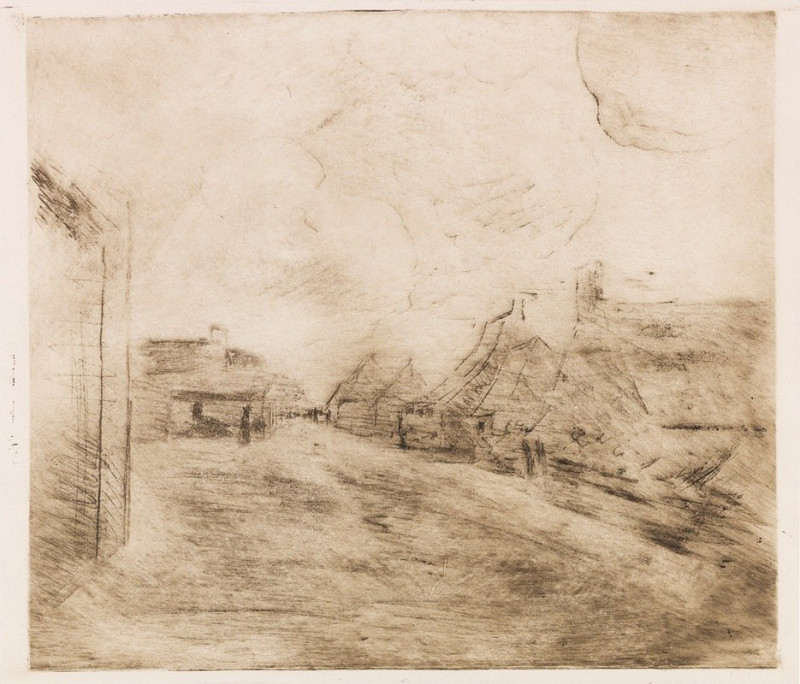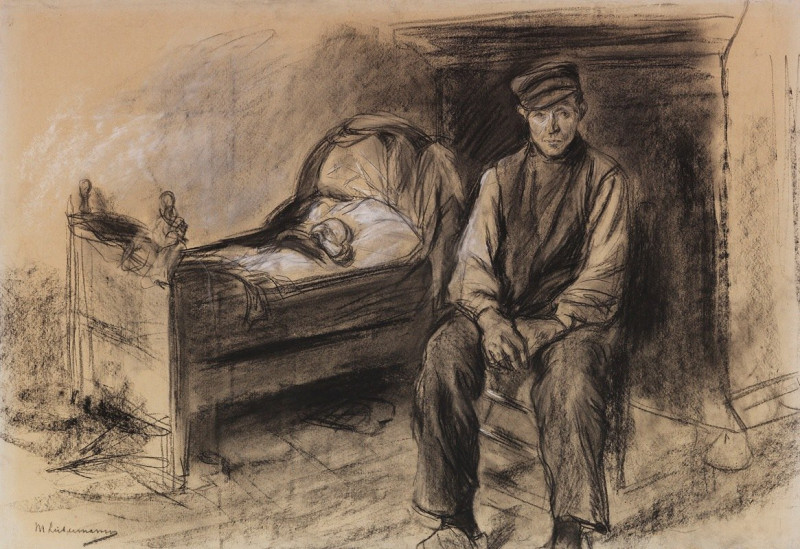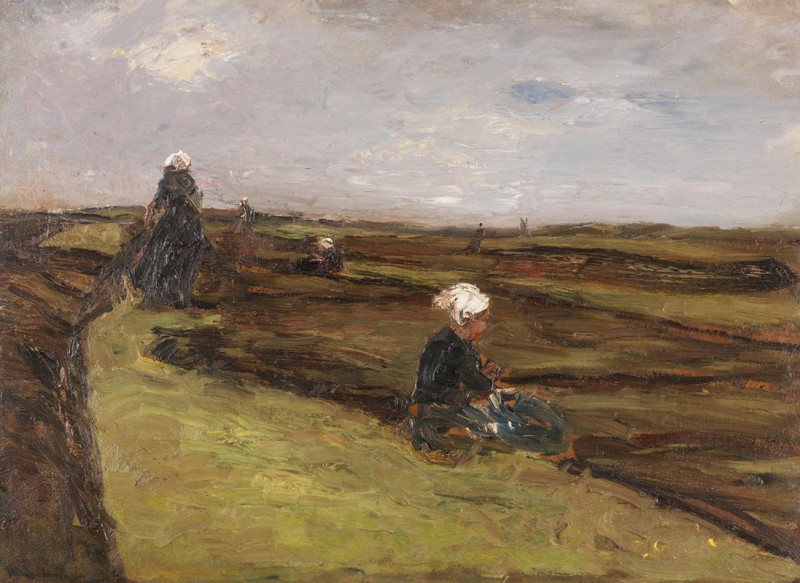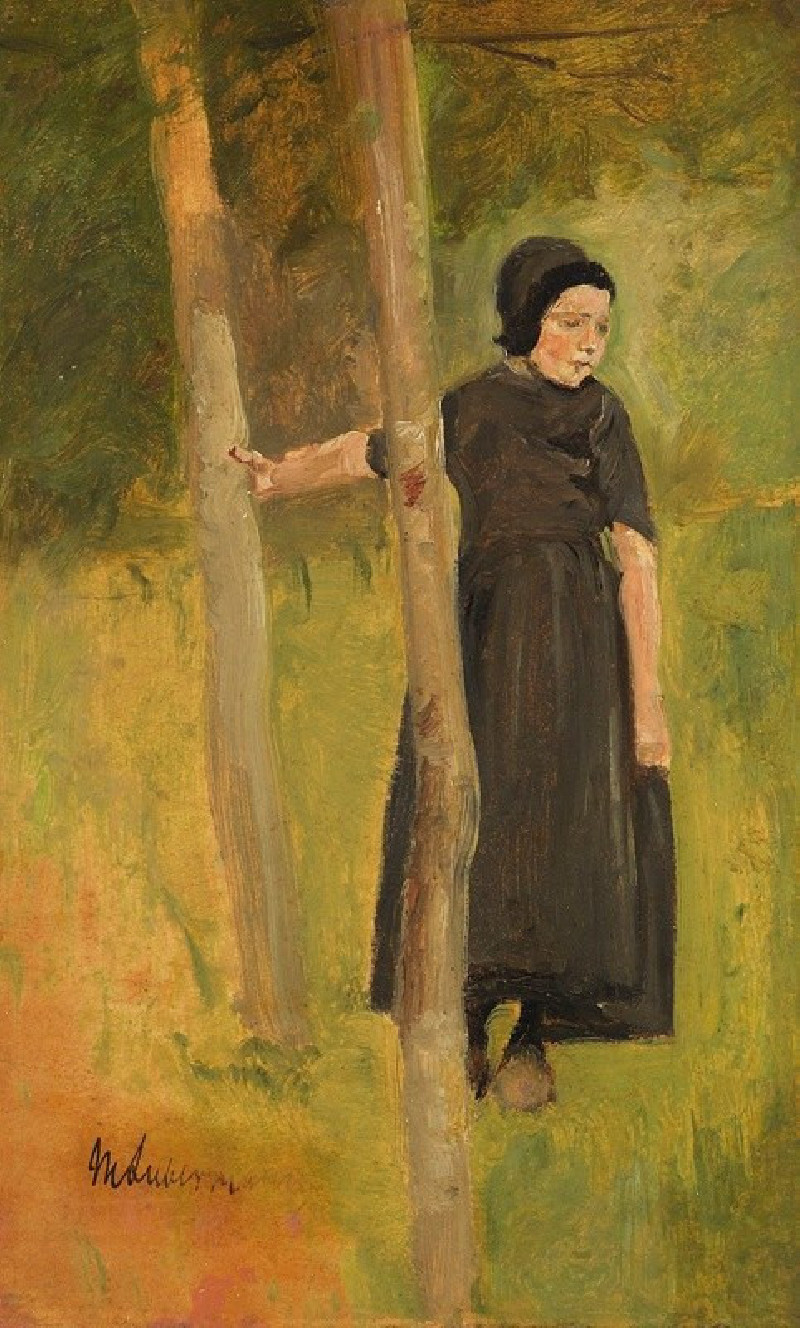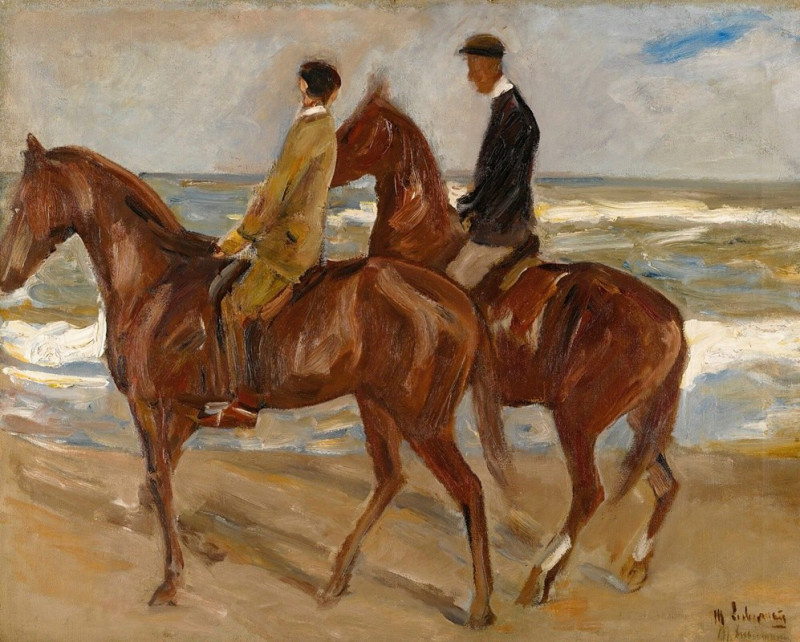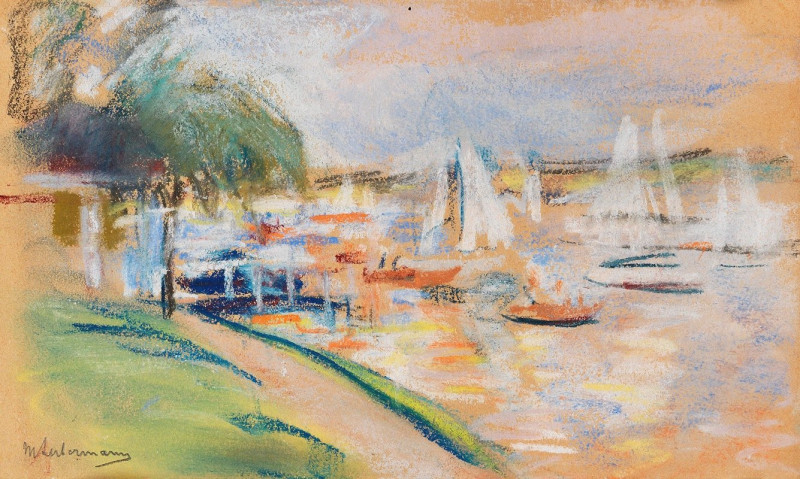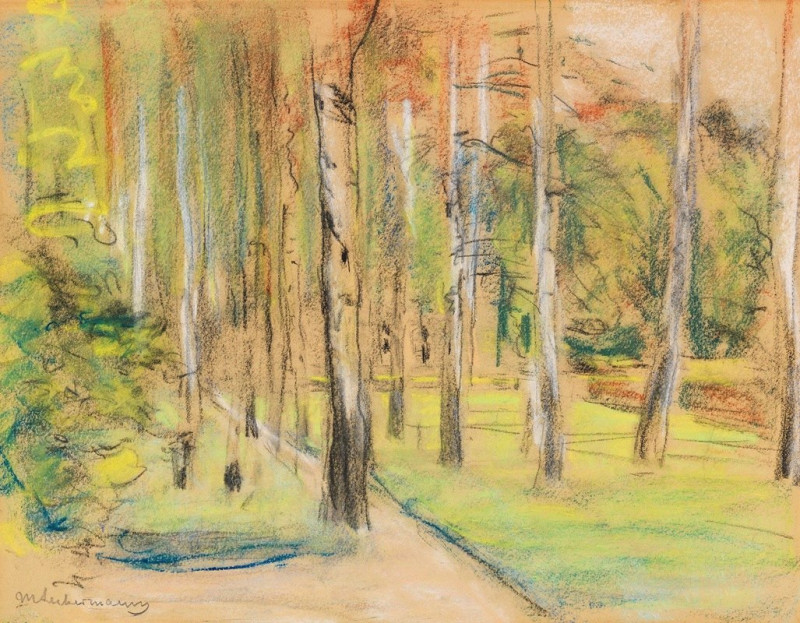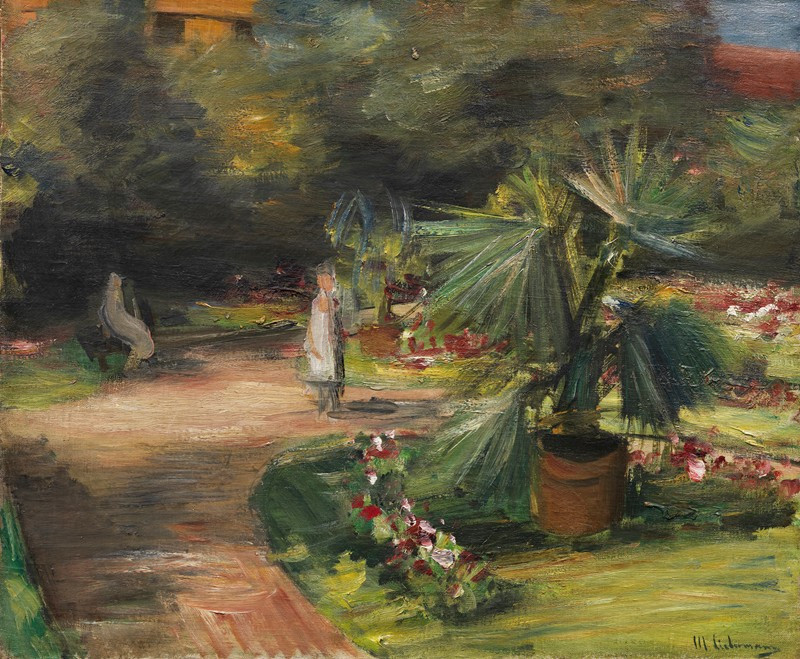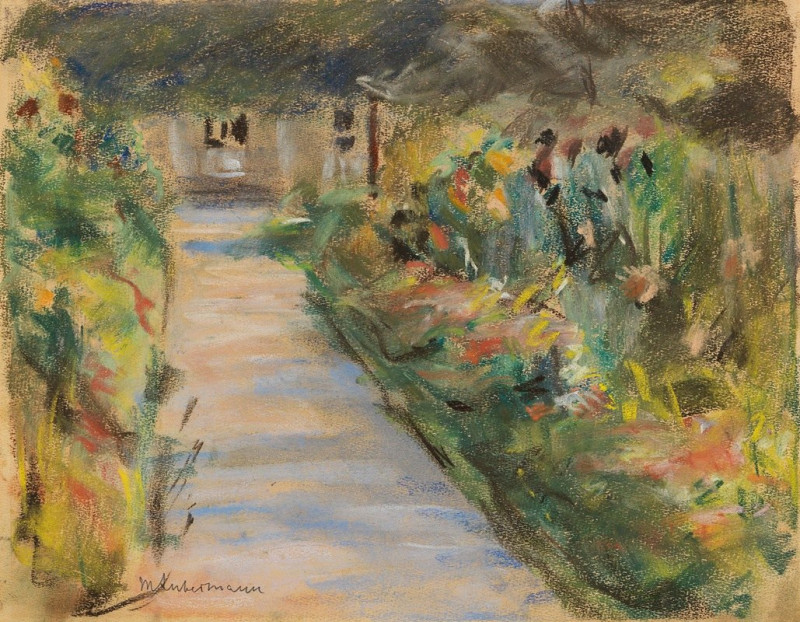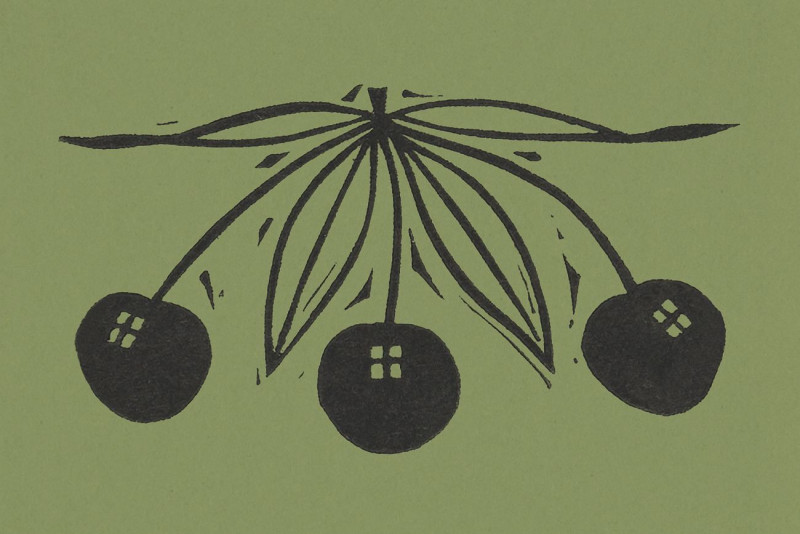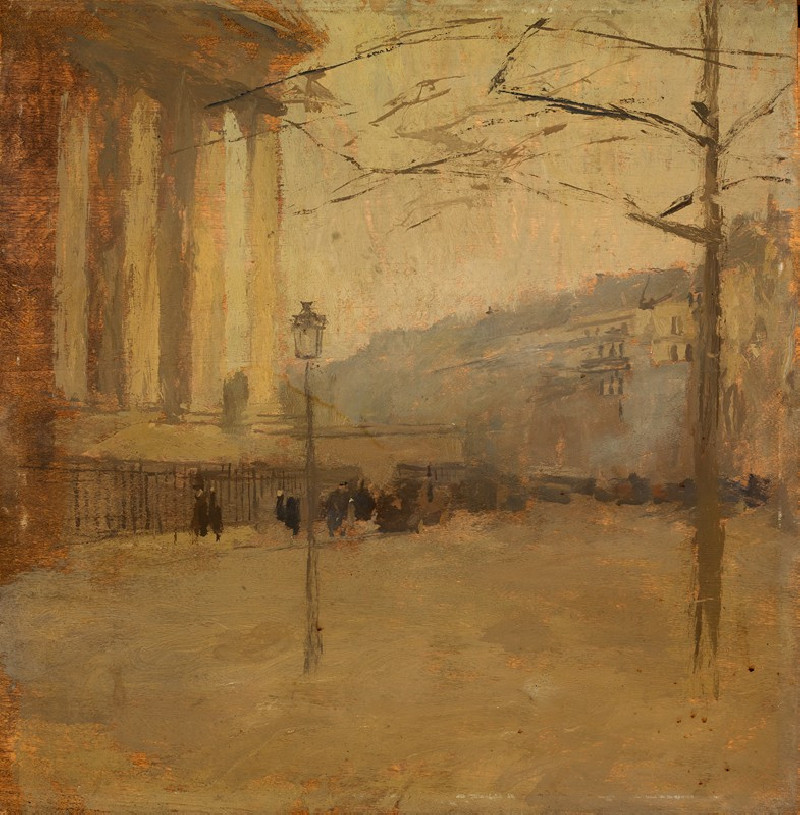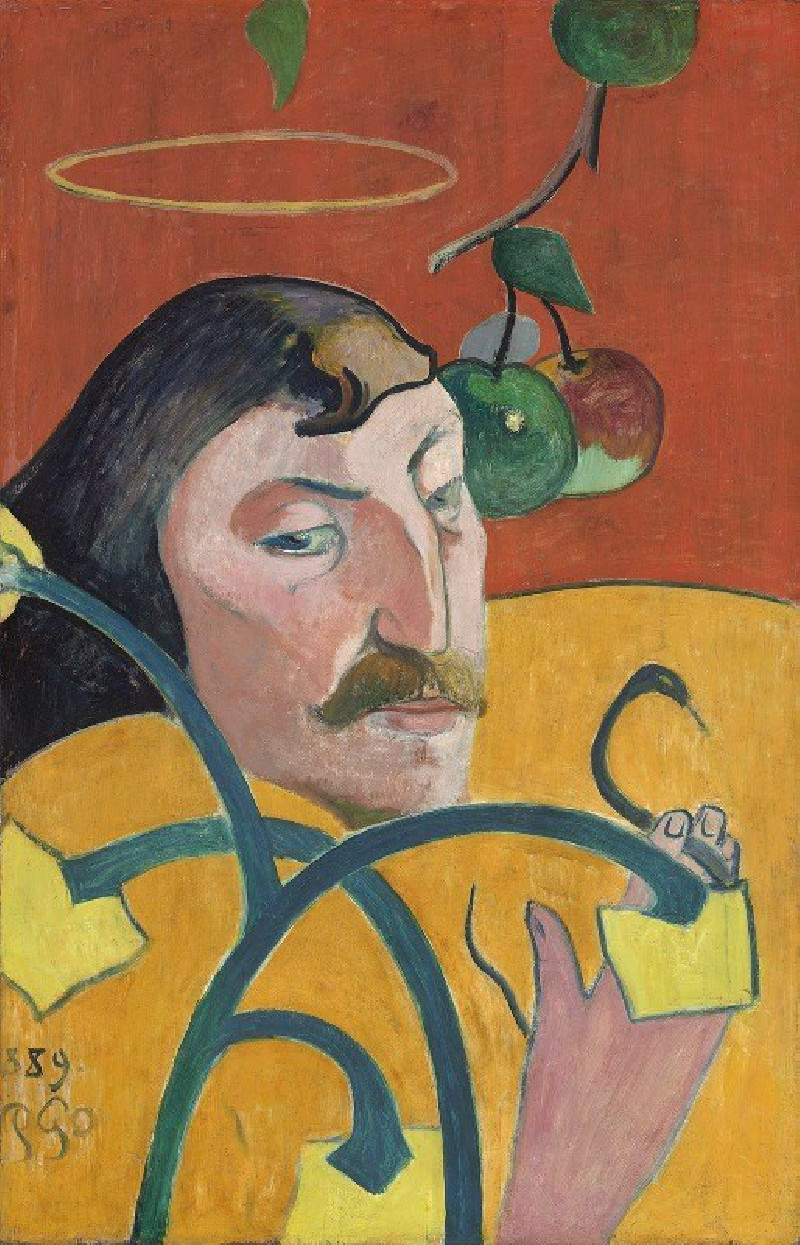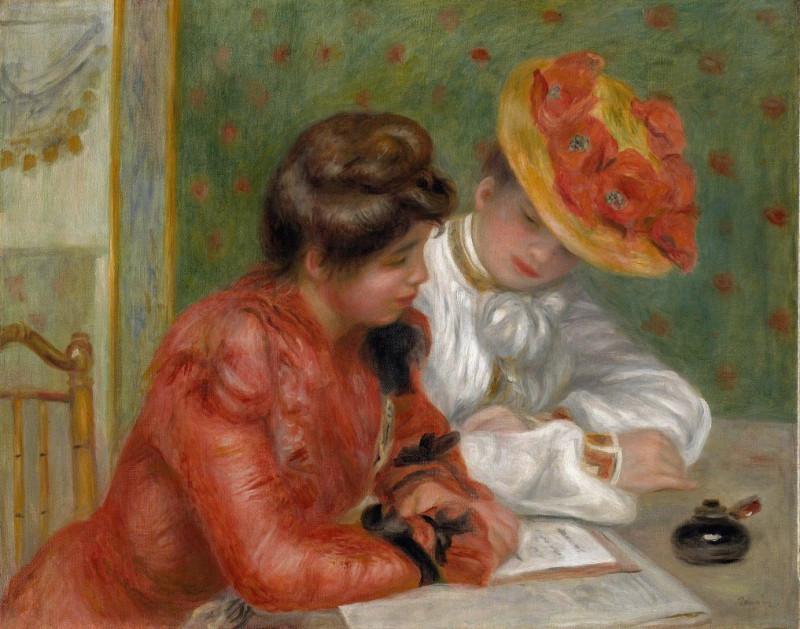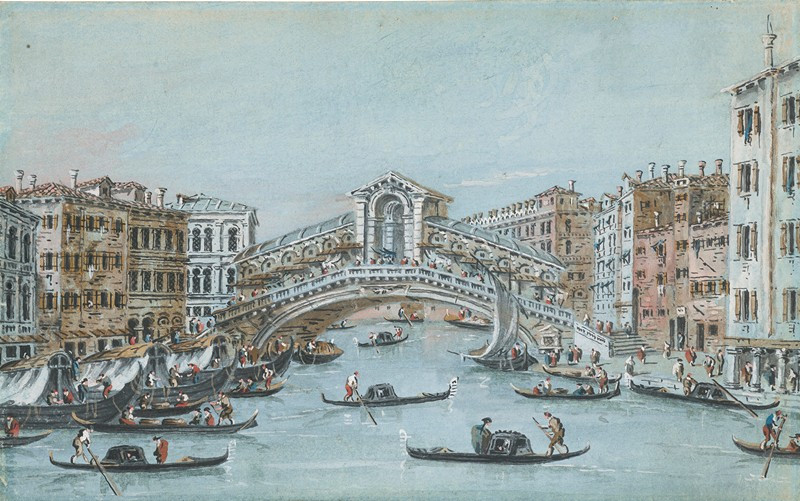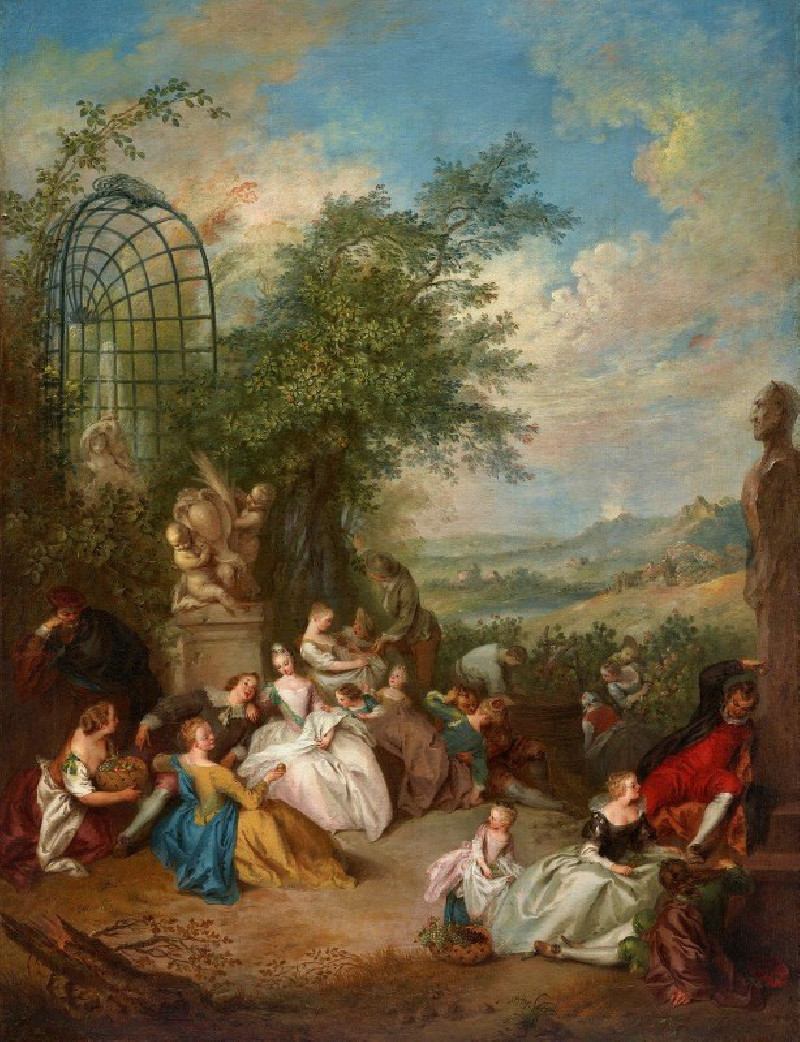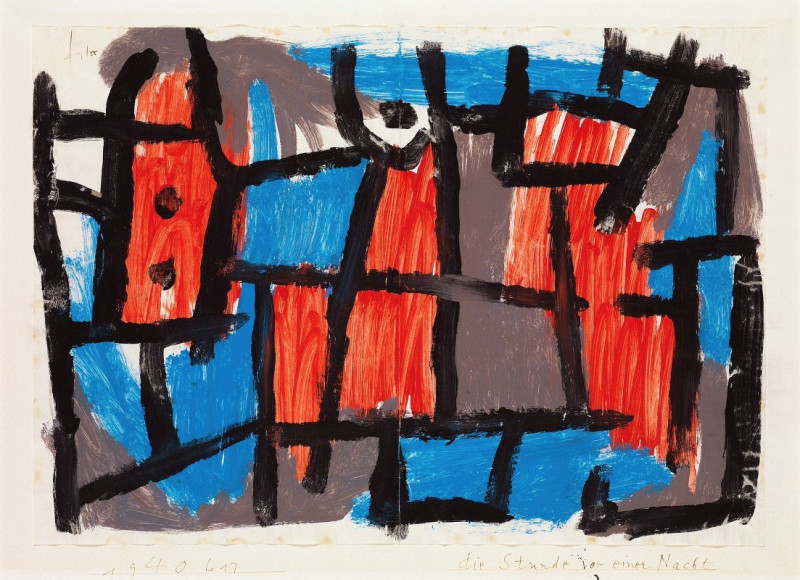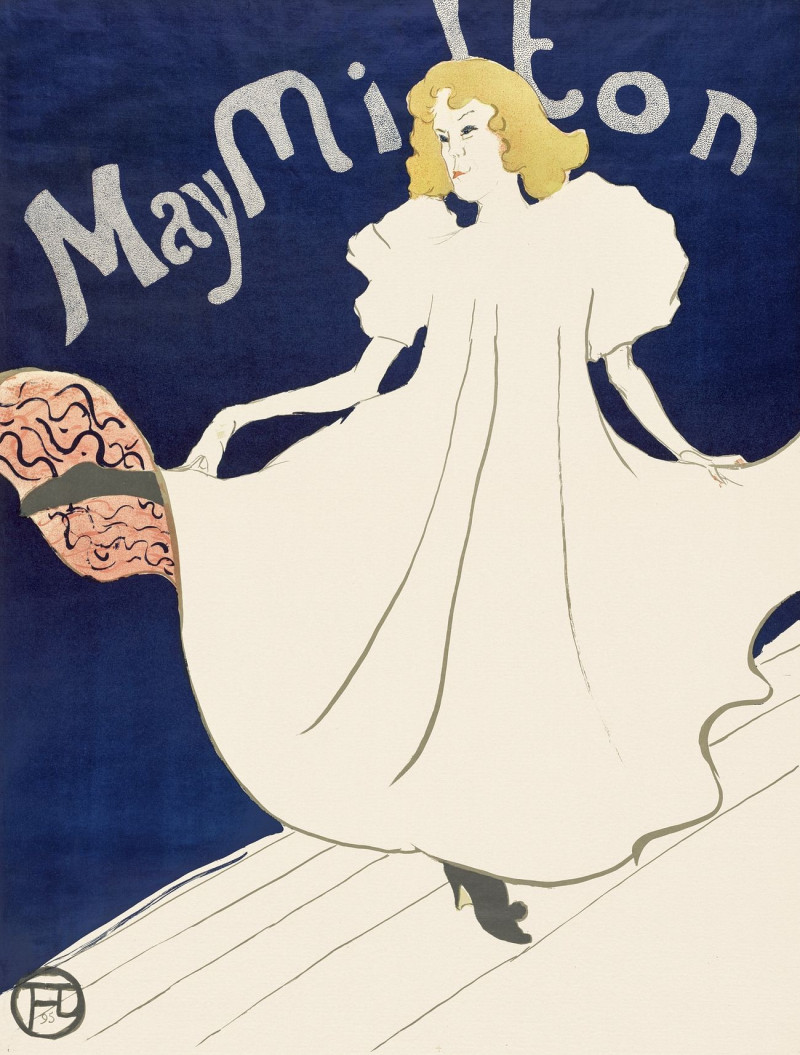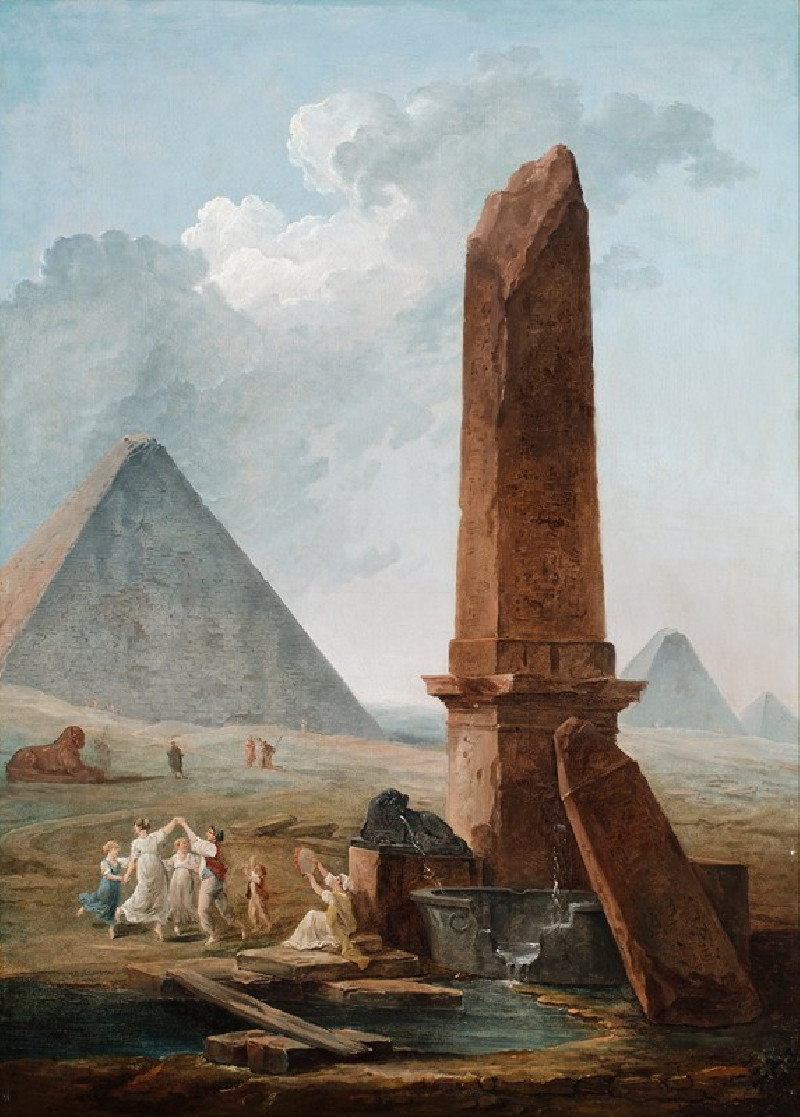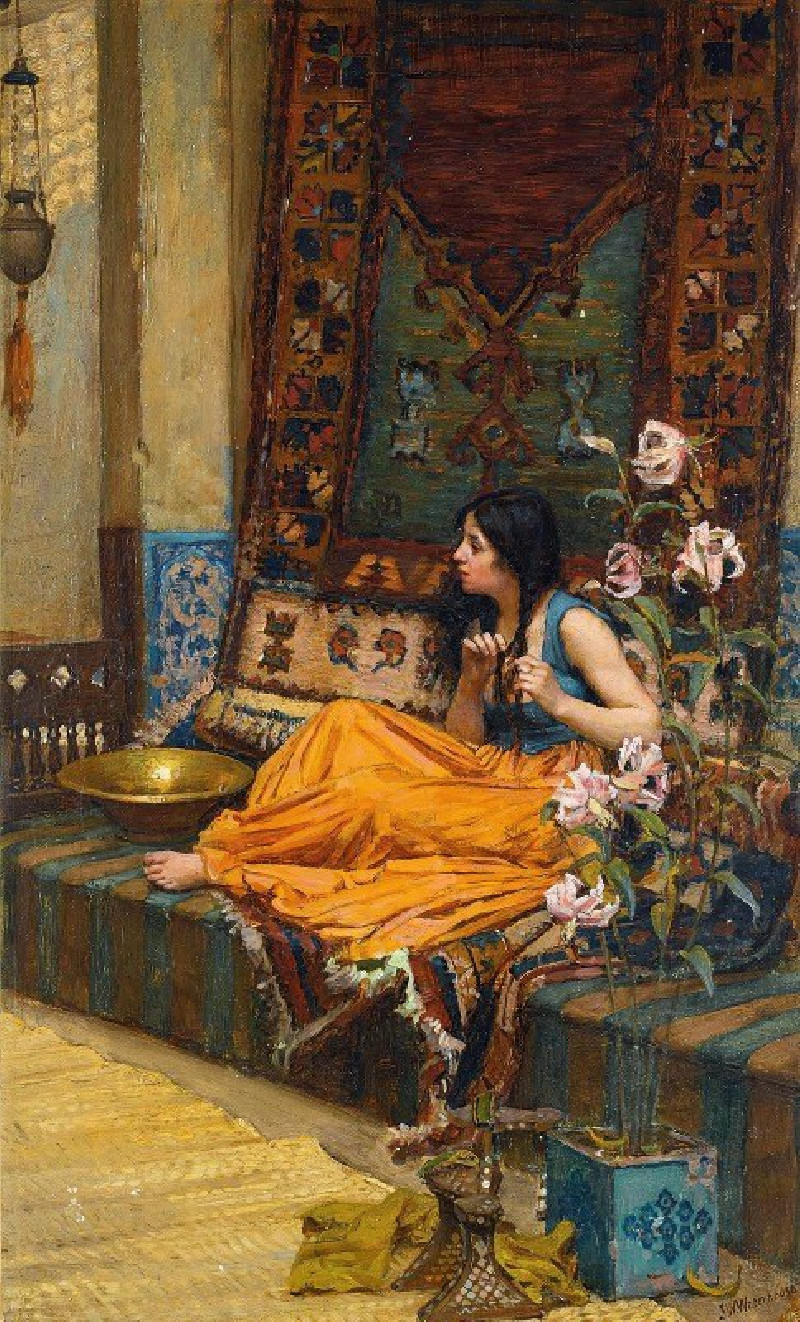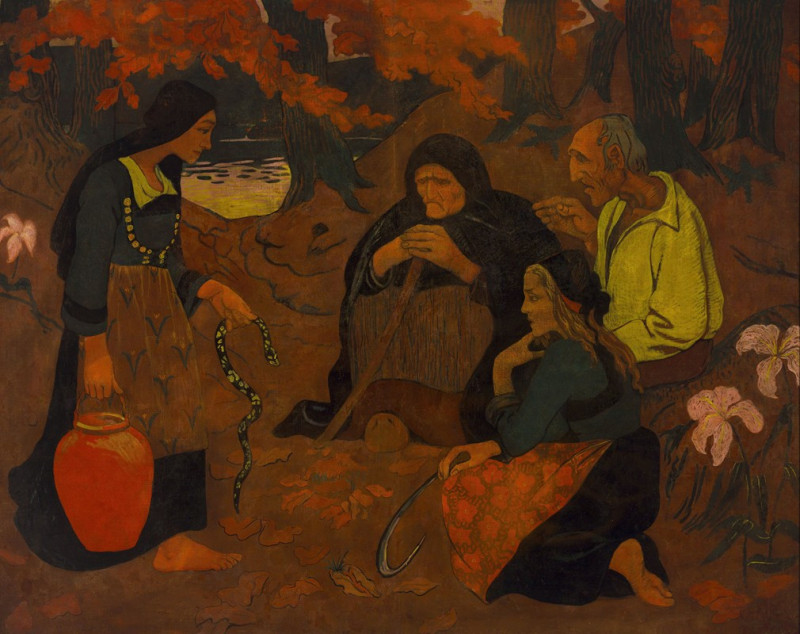Fontane (1926-27)
Technique: Giclée quality print
Recommended by our customers
More about this artwork
Max Liebermann, a prominent figure in German Impressionism, captures a serene yet lively moment in his sketch, "Fontane" (1926-27). This piece, drawn with soft yet expressive lines, depicts a charming scene of play and leisure in what appears to be a serene woodland setting.In the foreground, a child joyously swings from a wooden seat suspended from a robust frame, evoking a sense of carefree movement and childhood delight. Another child, standing to the side and slightly obscured by the shaded grove of trees, watches, perhaps waiting for a turn on the swing or simply enjoying the sight of their companion's playful antics.The setting is rendered with light, fluid strokes that suggest a dappled sunlight filtering through the leaves of tall, slender trees, enhancing the feel of a secluded, peaceful grove where nature's beauty quietly unfolds around the youthful figures.Liebermann's "Fontane" not only portrays a snapshot of everyday joy but also reflects the artist’s mastery in conveying movement and emotion with minimal yet impactful details.
Delivery
Returns
Max Liebermann was a German painter and printmaker of Ashkenazi Jewish ancestry, and one of the leading proponents of Impressionism in Germany.
The son of a Jewish fabric manufacturer turned banker from Berlin, Liebermann grew up in an imposing town house alongside the Brandenburg Gate.
He first studied law and philosophy at the University of Berlin, but later studied painting and drawing in Weimar in 1869, in Paris in 1872, and in the Netherlands in 1876–77.

